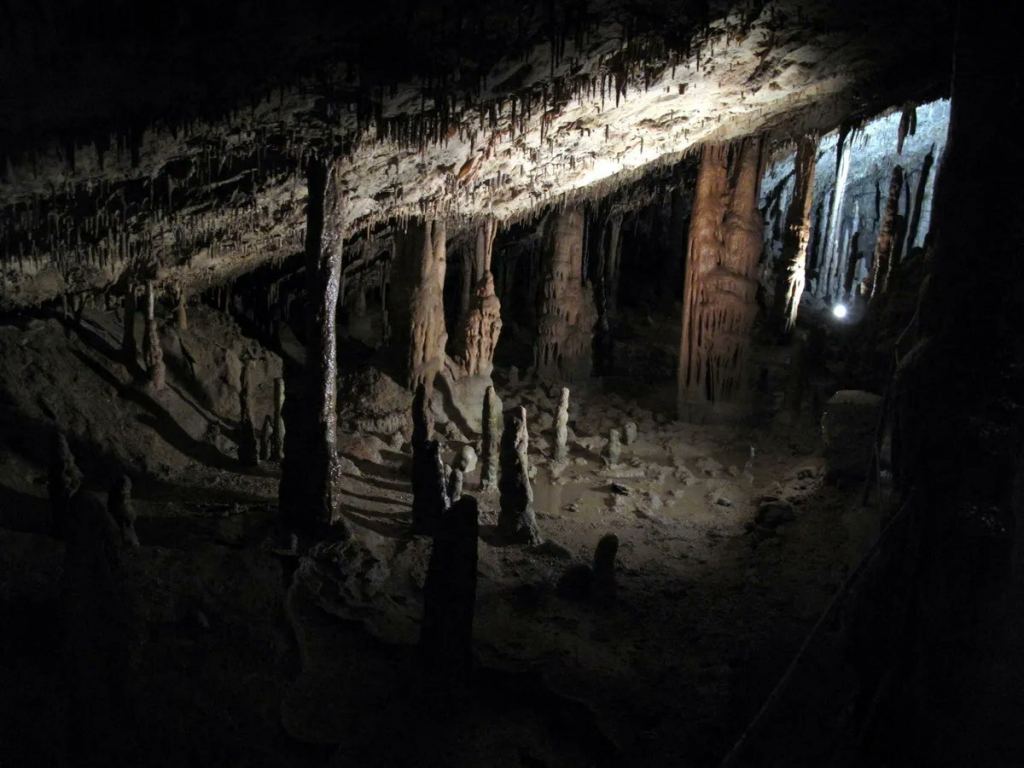Simulation is key to space exploration. Scientists and engineers test as many scenarios as possible before subjecting their projects to the harshness of space. It should not be any different with the future living quarters of explorers on the Moon.
One of the most commonly cited locations for a future permanent lunar base is in the relatively recently discovered lava tube caves scattered throughout the lunar mare. Simulating such an environment on Earth might be difficult, but a team from the Center for Space Exploration in China thinks they might have a solution – using karst caves to simulate lunar lava tubes. Simulating the exact environment of lunar lava tubes is likely impossible on Earth.
The higher gravity and constant weather changes of our planet would probably collapse them. However, they have been stable on the Moon for billions of years and offer an ideal place to hide humanity’s first infrastructure. That is because they protect explorers from three major hazards on the lunar surface: radiation, meteorites, and thermal shock.
Radiation is an ever-present danger on the lunar surface, which lacks the atmosphere that protects most of us down here on Earth. So much so that it’s about 200 times what people on the Earth’s surface receive. In the long run, that is a recipe for a very high chance of cancer, and no one is going to want to subject themselves to that.
UT video on the lunar lava tubes that might house humanity’s first permanent lunar base. Meteorites are a more immediate danger. Though they are relatively rare, they can still have a catastrophic impact on the functioning of a lunar base.
Again, a lack of atmosphere contributes to their danger, as they impact the surface going whatever relative speed they happen to be, without being slowed by air. A more regular danger is the temperature extremes on the lunar surface. The Moon is actually exceptionally hot – at least for approximately 50% of the time when it’s in direct sunlight.
During those weeks, it reaches temperatures of 127° C. On the flip side (literally), the lunar night drops temperatures to an extreme of -173° C. That thermal shock of around 300° C would play havoc on any engineered system that had to survive both the intense heat and extreme cold, let alone what it could do to an unprotected human body.
Those three reasons offer valid examples of why utilizing caves would be a great idea on the Moon. It’s almost like humanity would be returning to its roots as cavemen. However, there are several factors on how a life support system would interact with the soil and rock present in these caves that could affect how it operates.
Depiction of a potential habitat in a karst cave. Credit – Ding et al. Completely artificial experiments that attempt to mimic what an enclosed ecosystem would look like, such as Biosphere 2, don’t take into account what life in a cave would be like, where residents are subjected to the natural rock and soil and all the physiochemical interactions that come with it.
That is where the example of karst caves comes in. Karst caves are formed when limestone is eroded away by groundwater and offer some of the most stunning examples of caves on the planet. Some of the most spectacular are in the Chinese province of Chongqing and have tens of thousands of meters of internal surface area, which would be more than enough to house a small human outpost.
They also offer an opportunity to test three different scenarios that would be impossible to do with a wholly artificial biosphere. The first is cave-sealing technology. While absolutely critical when actually using a cave for shelter on a world without an atmosphere, completely artificial habitats don’t require the same kind of natural/artificial interface that would be necessary as part of a cave habitat.
Developing those interfaces in a natural system like the karst caves would at least be a step in the right direction. Why would we want to build a base on the moon? Isaac Arthur explains. Credit – Isaac Arthur YouTube Channel Second, determining what sort of daylight system might be necessary to keep the occupants healthy.
Self-contained surface habitats would be subjected to the lunar day/night cycle, which takes approximately two weeks, and can completely throw off the circadian rhythms of its inhabitants. Caves allow for more direct control of the environmental factors surrounding daylight, but it is unclear how best to display that to the people inside. Lastly, understanding how a wholly self-contained artificial ecosystem would interact with soil and rock in its natural state is really only possible when setting up shop in a cave.
Artificial habitats, by definition, don’t have the same kind of interaction, and as such, they lack a crucial component in understanding how life in a cave on the Moon would actually work. So far, all of this work is just a preliminary study and some computer simulations, but building up to a bigger simulation of actually using the caves as an analog for a lunar lava tube. There’s still a long way to go before we have a true understanding of what it’s like to live in a moon cave, but novel ideas for simulations like this one will continue to take us down the path toward eventually doing so.
Learn More:Ding et al. – Karst Cave as Terrestrial Simulation Platform to Test and Design Human Base in Lunar Lava TubeUT – Lava Tubes on the Moon Maintain Comfortable Room Temperatures InsideUT – Lava Tubes on the Moon and Mars are Really, Really Big. Big Enough to Fit an Entire Planetary BaseUT – Living Underground on Other Worlds.
Exploring Lava Tubes Lead Image:Image of the Škocjan Caves in Slovenia, an example of a karst cave. Credit – Peretz Partensky The post We Could Simulate Living in Lunar Lava Tubes in Caves on Earth appeared first on Universe Today. .
From: universetoday
URL: https://www.universetoday.com/159122/we-could-simulate-living-in-lunar-lava-tubes-in-caves-on-earth/



